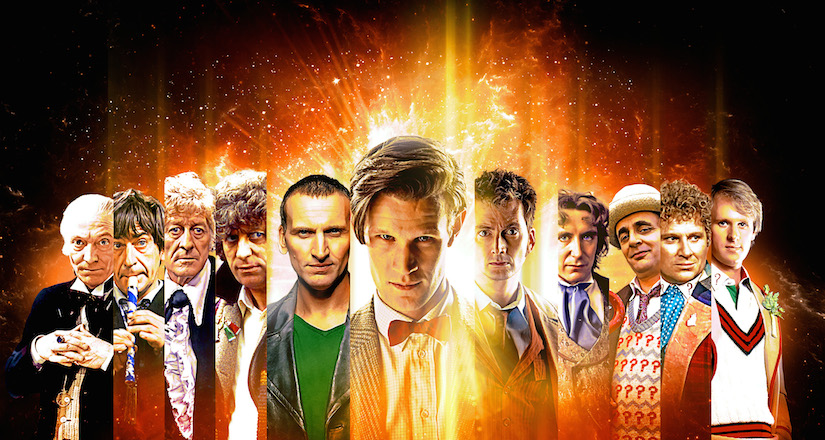
When Doctor Who won the 2012 Peabody Award, the institutional award was given not for the most recent season, but for the fifty years of Doctor Who that has been brought to screen by the BBC. To get a sense of the vast scope of Doctor Who’s impact over these last fifty years, I interviewed Professor Paul Booth, an academic scholar who has published a number of articles and several books that deal with pop culture, fan communities, and digital media. A long-time fan of the show, and editor of the recent book 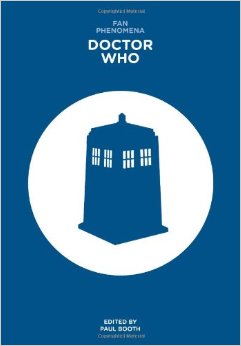 Fan Phenomena: Doctor Who (Intellect, 2013), we questioned him about the arrival of the new Doctor Who season on August 23rd and the (staggeringly labyrinthine) backstory of the Doctor.
Fan Phenomena: Doctor Who (Intellect, 2013), we questioned him about the arrival of the new Doctor Who season on August 23rd and the (staggeringly labyrinthine) backstory of the Doctor.
Wes Unruh: With the 50th Anniversary of Doctor Who, the nature of the Doctor’s primary motivation seems to have changed. What larger cultural considerations and anxieties might we expect the Doctor to address in future seasons? What cultural anxieties have we seen played out in past seasons?
Paul Booth: Doctor Who has always played with and reflected aspects of culture and popular anxieties, and that is never more true than with the New Who episodes over the past few years. Of course, no television program can ever escape the culture in which it’s made—that’s why television is such a wonderful medium to investigate for the cultural historian and critic. As a television show with fifty years of history, Doctor Who has had, more than most programs, numerous reflections of cultural concerns and anxieties. The many writers, producers, and actors that have played roles in the series since the early 1960s have all shaped the series in different directions; early episodes often reflected the prevailing anxieties and issues of the times. But because the behind-the-scenes personnel changed so often, it’s actually difficult to say that Doctor Who has any one particular philosophy—rather, the series is more like a patched together quilt of various ideas and themes that together form a heterogeneous whole. In other words, Doctor Who is a melting pot, a mutt of philosophies, and is all the stronger for it.
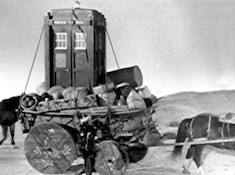 When the show first started in the 1963, it had been tasked with appealing to children and adults, and shows often had an educational remit. Early episodes like 1964’s Marco Polo (now largely missing from the archives) and The Aztecs are what are known as “historicals”—the Doctor, far from the all-knowing busybody of the current eras, is a curious traveler who loves learning about—and sometimes meddling in—the affairs of history. This focus on history contrasted with a growing emphasis on more science-fiction themes, especially with the first appearance of the Daleks in the second serial, 1964’s The Daleks. More than almost anything else, the Daleks were responsible for Doctor Who‘s major successes in the early years—they were phenomenally popular, gave rise to the “Dalekmania” of the 1960s, and continue to be popular monsters today. From their start, the Daleks were also a reference for a particular historical anxiety—their origin in their first story reveals that they were born from nuclear war, a clear concern echoed in Cold War Britain. Yet, their militaristic and hierarchical organization, their cries of “Exterminate!” and their general unemotional detachment seem to reflect back onto post-WWII anxieties about Nazis and fascists. Is it any wonder that their plunger-like appendages are wielded like Hitler salutes throughout the series?
When the show first started in the 1963, it had been tasked with appealing to children and adults, and shows often had an educational remit. Early episodes like 1964’s Marco Polo (now largely missing from the archives) and The Aztecs are what are known as “historicals”—the Doctor, far from the all-knowing busybody of the current eras, is a curious traveler who loves learning about—and sometimes meddling in—the affairs of history. This focus on history contrasted with a growing emphasis on more science-fiction themes, especially with the first appearance of the Daleks in the second serial, 1964’s The Daleks. More than almost anything else, the Daleks were responsible for Doctor Who‘s major successes in the early years—they were phenomenally popular, gave rise to the “Dalekmania” of the 1960s, and continue to be popular monsters today. From their start, the Daleks were also a reference for a particular historical anxiety—their origin in their first story reveals that they were born from nuclear war, a clear concern echoed in Cold War Britain. Yet, their militaristic and hierarchical organization, their cries of “Exterminate!” and their general unemotional detachment seem to reflect back onto post-WWII anxieties about Nazis and fascists. Is it any wonder that their plunger-like appendages are wielded like Hitler salutes throughout the series?
Beyond historical anxieties, the show started to feature more contemporary parables. In the 1970s, for example, the show’s emphasis on environmental issues—with episodes like The Green Death and The Seeds of Doom—illustrate a growing emphasis on the “green” movement. Some episodes also dealt with much more specific concepts—1974’s episode The Monster of Peladon is a direct comment on the UK Miner’s strike of 1973, and 1977’s The Sunmakers is a not-too-subtle dig at tax regulations. 1972’s The Mutants seemed to have an underlying thematic concern with post-colonial Britain, as the episode featured a colonizing force terraforming a planet and eliminating the native population—a rather clear reflection of anti-apartheid sentiments at the time.
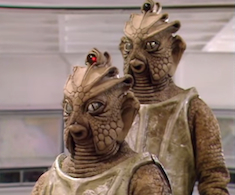 In the 1980s, as Doctor Who began to lose popularity in the UK, the episodes often seemed to become more deliberately political. 1984’s Warriors of the Deep found the Fifth Doctor and his companions facing a Cold War era parable, as they land on board a nuclear sea base when the world is divided into two opposing super powers. That the Sea Devils and the Silurians decide to wage war against the humans serves not to unite the populace, but to drive them even further apart. The Doctor’s final words in the episode, intoned almost directly to camera as he is surrounded by dead bodies, drive home the larger cultural fears: “There should have been another way.” 1985’s Vengeance on Varos, which features an alien world that regularly broadcasts torture and execution, is a thinly veiled comment about the very televised violence that Doctor Who was accused of by conservative critics like Mary Whitehouse. And although they deny a direct comparison, the creators of 1988’s The Happiness Patrol made the villain, Helen A, an almost direct comment on then-Prime Minister Margaret Thatcher.
In the 1980s, as Doctor Who began to lose popularity in the UK, the episodes often seemed to become more deliberately political. 1984’s Warriors of the Deep found the Fifth Doctor and his companions facing a Cold War era parable, as they land on board a nuclear sea base when the world is divided into two opposing super powers. That the Sea Devils and the Silurians decide to wage war against the humans serves not to unite the populace, but to drive them even further apart. The Doctor’s final words in the episode, intoned almost directly to camera as he is surrounded by dead bodies, drive home the larger cultural fears: “There should have been another way.” 1985’s Vengeance on Varos, which features an alien world that regularly broadcasts torture and execution, is a thinly veiled comment about the very televised violence that Doctor Who was accused of by conservative critics like Mary Whitehouse. And although they deny a direct comparison, the creators of 1988’s The Happiness Patrol made the villain, Helen A, an almost direct comment on then-Prime Minister Margaret Thatcher.
New Who has had its share of reflecting cultural concerns and anxieties. Episodes have focused on issues that touch us all—cultural oppression (Planet of the Ood), environmental concerns (Gridlock; The Sontaran Stratagem/The Poison Sky), an anxiety of our reliance on mobile technology (Rise of the Cybermen), and colonization and racism (The Hungry Earth/Cold Blood, A Town Called Mercy). One aspect that is much more prevalent in New Who as opposed to Classic Who is more concern with the time travel aspects of the show. In Classic Who, time travel more often than not was simply a way to visit history or explore the future. There are a few exceptions—1965’s The Space Museum featured a strange first episode where the TARDIS crew became unstuck from time, 1972’s The Day of the Daleks (a personal favorite of mine) deals directly with changing events in the past to affect the future, 1975’s Pyramids of Mars investigates the consequences of the Doctor’s actions by showing a future razed Earth if he doesn’t succeed—but by and large time travel was simply a mechanisms for getting from one (temporal) location to another. But in New Who, time travel has become significant in and of itself. We learn about the dangers of changing history in 2005’s Father’s Day. The Girl in the Fireplace shows in miniature how the Doctor’s in-and-out of time affects the growth (and love) of others. 2007’s brilliant episode Blink revolves entirely around time travel paradoxes and the effects of various causes. Most of Series 6—from The Impossible Astronaut to The Wedding of River Song—featured time travel, paradoxes, shifting realities, etc. Even the character River Song herself was originally conceived to run parallel but backwards in time with the Doctor. He encounters her out of order, their endings becoming beginnings. As I’ve written about before, this continued emphasis on time travel is a reflection of a number of cultural anxieties about new technologies, the rise of social media, the multiple ways we can access information and contact people today, and the cultural impact of uncertainty in our information age. When anyone can rewrite Wikipedia, then are we all “rewriting history,” as the Doctor warns us against?
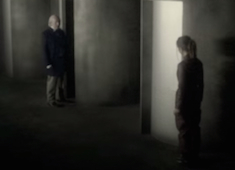 More than anything, though, the most recent New Who episodes seem to be focused on cultural anxieties about Doctor Who itself. The most recent few episodes—The Name of the Doctor, The Day of the Doctor, The Time of the Doctor, and the mini episode The Night of the Doctor—all prominently feature “The Doctor” as the central focus. The final episode of the 7th series, The Name of the Doctor, sees Clara revisiting all the Doctor’s previous incarnations, literally rewriting Doctor Who’s history in front of our eyes. Where Clara never was, she now always is. Does this “retcon” our understanding of Classic Who (create “retroactive continuity”)? My colleague at Aberystwyth University in Wales, Matt Hills, has argued that multi-Doctor specials hold a special place in the eyes (and minds) of Doctor Who fans, as they “help to bind together Doctor Who‘s vast narrative world.” Yet, the most recent Doctor Who stories serve to do more than bind together—at the end of the 50th anniversary The Day of the Doctor, the Doctor literally rewrites the history of Doctor Who. Not only does the Doctor establish a new diegetic (in-text) history of the character (whereas once he destroyed the Time Lords, now he saves them), but he assures the place of the show as well. As all twelve incarnations (counting John Hurt’s the War Doctor) stand in a dream-like sequence look towards a planet—the Doctor’s homeworld of Gallifrey?—the Eleventh (Matt Smith) utters: “I have a new destination. My journey is the same as yours, the same as anyone’s. It’s taken me so many years, so many lifetimes, but at last I know where I’m going. Where I’ve always been going. Home. The long way around.” The Doctor, our wandering Time Lord, has a purpose. Doctor Who, our classic hodgepodge, has a focus.
More than anything, though, the most recent New Who episodes seem to be focused on cultural anxieties about Doctor Who itself. The most recent few episodes—The Name of the Doctor, The Day of the Doctor, The Time of the Doctor, and the mini episode The Night of the Doctor—all prominently feature “The Doctor” as the central focus. The final episode of the 7th series, The Name of the Doctor, sees Clara revisiting all the Doctor’s previous incarnations, literally rewriting Doctor Who’s history in front of our eyes. Where Clara never was, she now always is. Does this “retcon” our understanding of Classic Who (create “retroactive continuity”)? My colleague at Aberystwyth University in Wales, Matt Hills, has argued that multi-Doctor specials hold a special place in the eyes (and minds) of Doctor Who fans, as they “help to bind together Doctor Who‘s vast narrative world.” Yet, the most recent Doctor Who stories serve to do more than bind together—at the end of the 50th anniversary The Day of the Doctor, the Doctor literally rewrites the history of Doctor Who. Not only does the Doctor establish a new diegetic (in-text) history of the character (whereas once he destroyed the Time Lords, now he saves them), but he assures the place of the show as well. As all twelve incarnations (counting John Hurt’s the War Doctor) stand in a dream-like sequence look towards a planet—the Doctor’s homeworld of Gallifrey?—the Eleventh (Matt Smith) utters: “I have a new destination. My journey is the same as yours, the same as anyone’s. It’s taken me so many years, so many lifetimes, but at last I know where I’m going. Where I’ve always been going. Home. The long way around.” The Doctor, our wandering Time Lord, has a purpose. Doctor Who, our classic hodgepodge, has a focus.
This focus, the return of the Time Lords, seems to be is the major arc of the 8th season (or “series” in the UK), is particularly interesting, given the place of the Time Lords in Doctor Who. For the first six years of the series, the true nature of the Doctor’s alien race was never mentioned – it wasn’t until the final series of Patrick Troughton’s turn as the Doctor that it was revealed. During Jon Pertwee’s reign as the Third Doctor, the Time Lords occasionally would appear (sometimes wearing a bowler hat and pinstripe suit!) on Earth to check up on the Doctor, as he had been exiled to the planet after being put on trial. During Tom Baker’s time as the Fourth Doctor, the Time Lords exemplified the stereotypes of the fussy British elite, with all their foppery and regalia—and political backstabbing. Largely absent in much of the later Classic Who, with the notable exception of 1986’s Trial of a Time Lord serial, which saw the Doctor once again put on trial, the Time Lords were usually a group of people the Doctor avoided. The entire Trial of a Time Lord series was a comment on the future of Doctor Who as a program. More than just The Doctor was on trial—Doctor Who was as well. The Time Lords, here the “authority” of the BBC (and the political establishment that ran it), accuse the Doctor of breaking Time Lord laws. In reality, Doctor Who, under constant threat of cancelation, and only just having returned after an unexpected “hiatus,” is reflecting its own status.
The return of the Time Lords in the new series, then, would seem to herald a return to a critique of the establishment. The Time Lords are not good guys: the Time Lords have been, since their inception, stand-ins for everything the Doctor is rebelling against – stuffiness, strict non-interference, and elitism. With Peter Capaldi taking over the role, one imagines a return to some of this critique of the Time Lords’ authoritarianism; the Doctor now seems more stern and less fanciful. Producer Steven Moffat has claimed that with the new season, “the fairytale era of the show is over. Season 8 will reportedly center on consequences.” If the Time Lords are to be involved, then I think we can expect rebellion and political intrigue, topics that never really go out of fashion.
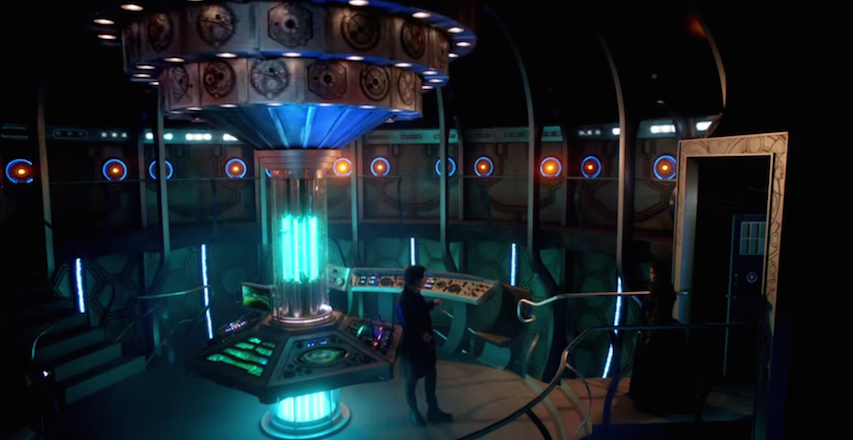
Ultimately, Doctor Who has always been about the world in which it is made. Each episode—not just the ones mentioned here—reflect aspects of the people that made it and the culture from which it came. Doctor Who is one of the richest television texts we have to examine changing cultural paradigms and anxieties. As such, it offers a spectrum of insights into who we are, who we were, and who we are in the process of becoming.
WU: Who initially brought Doctor Who to the screen? What else were the writers and producers of the first episodes involved in creating?
PB: Much like it is today, Doctor Who was originally the product of many people, a confluence of personalities and opinions that inscribed the theme of the show. Doctor Who was originally conceived of by a Canadian producer named Sydney Newman who was working for the BBC. Newman was born in Toronto but moved to the UK in 1958 after receiving a job offer from the Associated British Corporation (ABC). While there, he worked on drama programs like Armchair Theatre, a series that included the first televised plays of dramatists like Harold Pinter and Angus Wilson. Armchair Theatre was popular, and in 1962 the BBC took note of his work and hired him with the explicit task of filling a gap in the Saturday evening schedule. Newman wanted to create a science fiction show that might appeal to both parents and children, as the time the show aired was prime time for family viewing. This show was Doctor Who.
Once Newman started to conceive of Doctor Who, he hired Verity Lambert, a young producer at the BBC to realize the show. Lambert cast the Doctor (William Hartnell) and the original companions for the lead (Barbara [Jacqueline Hill], Susan [Carole Ann Ford], and Ian [William Russell]). At the time, Lambert was the first female producer at the BBC, and to date is the only women to lead produce Doctor Who at all (although the New Who series features some female producers in the role, including Susie Liggart, Tracie Simpson, Nikki Wilson, Sanne Wohlenberg, and Denise Paul, changes in how television is produced means that all New Doctor Who has been led by the male showrunners, first Russell T. Davies and now Steven Moffat). Lambert is responsible for many of the key elements that made the show successful in the beginning. She kept much of the Doctor’s background vague so that there was more mystery behind the character, and although Newman had original stipulated that he wanted no “BEM’s” in the show—“Bug Eyed Monsters”—thankfully, Lambert ignore his request and commissioned writer Terry Nation and designer Ray Cusack to create the Daleks.
Both Newman and Lambert were highly influential in the history of Doctor Who and the show has not forgotten. In the 2007 episode Human Nature, when the Doctor (David Tennant) has lost his memory and is acting as a school teacher in 1913, he mentions that his parents are “Sydney and Verity,” a nice shout-out to the creative team that brought the show to air in 1963.
There were many people responsible for bringing Doctor Who to air originally, and it is important to recall director Waris Hussein, who directed the first serial of the series (An Unearthly Child) as well as the lost Marco Polo. Much of the visual “feel” of the show can be attributed to his keen eye. Hussein was born in India in the 1930s but grew up in the UK. He continued to work with Lambert after Doctor Who, and is still working today. Verity Lambert left Doctor Who in 1965 and continued to produce television and film, eventually being awarded an OBE for her services. In her later years she contributed commentaries to some Doctor Who DVDs. She died in 2007. Sydney Newman moved back to Canada in 1970 and became Chairman of the National Film Board of Canada. Later he became a director of the Canadian Broadcasting Corporation. He died in 1997. (Note: some of the research for this answer comes from the BBC’s website “An Adventure in Time and Space.”)
WU: When Doctor Who left television in the late Eighties, he re-appeared in novels published by Virgin Publishing. How did this period of character development deepen the fan community? What aspects of these narratives were retained in our current understanding of who Doctor Who is and what he has accomplished?
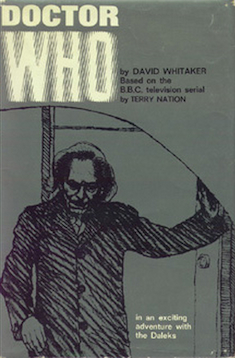 PB: The history of Doctor Who being published in book form actually goes back to the very beginning of the show. Based on the success of the first appearance of the Daleks, the publishing house Frederick Muller Ltd. published The Daleks, a somewhat alternate version of the original episode. The book was a hit, and various other early episodes were novelized over the next few year. Doctor Who in literature form thrived between 1973 and 1991 when Target Books published a novelization based on almost every Doctor Who story broadcast. These books were quite successful; many spawning additional editions, and a market for them exists today on second hand sales sites like ebay.
PB: The history of Doctor Who being published in book form actually goes back to the very beginning of the show. Based on the success of the first appearance of the Daleks, the publishing house Frederick Muller Ltd. published The Daleks, a somewhat alternate version of the original episode. The book was a hit, and various other early episodes were novelized over the next few year. Doctor Who in literature form thrived between 1973 and 1991 when Target Books published a novelization based on almost every Doctor Who story broadcast. These books were quite successful; many spawning additional editions, and a market for them exists today on second hand sales sites like ebay.
Thus, by the time the Classic series ended in 1989, there had already been a thriving community of fans and viewers who were familiar with reading Doctor Who instead of merely watching it. And this is very important for a show like Doctor Who. Since the show was so long lived – in 1989 it had been on the air for 26 years – many of its most ardent fans only knew the early years of the show through the novelizations. Many of the earlier Doctor Who episodes were lost, and even those that weren’t were only very rarely (if ever) shown on television or released on VHS tape. Even for episodes that had aired and could be rewatched, reading the novelization often produced a different interaction with the show for fans, deepening and broadening the experience and knowledge of the characters and situations, and even introducing elements before they were introduced on the show proper (for example, the name of the famous “Chameleon Circuit,” the faulty switch that keeps the Doctor’s TARDIS in the shape of the blue Police Box, was first used in 1975’s novelization of The Terror of the Autons, before being named in 1981’s episode Logopolis.)
So, for many fans, the range of books was a natural home after the end of the series on television in 1989, and indeed, for fans that came of age in the 1980s, the books were often the first experience of Doctor Who. My colleague C.O. Jones, in his chapter for my book Fan Phenomena: Doctor Who, calls these fans “hiatus fans,” as they had experiences “unlike that of any Doctor Who fans before them.” He describes different ways fans could interact with the program even while it was not being made, including celebrating milestone anniversaries, listening to audio dramas, watching reruns and researching online, and reading the original novels from the 1990s and 2000s. As he writes of these novels: “Following the program’s cancellation, Virgin began to publish the New Adventures, a continuation of the narrative that had ended with the stories of the Seventh Doctor’s final season. Later in the decade, the same press began publication of another range of books, the Missing Adventures, featuring the other Doctors. Both ranges proved successful, and prompted BBC Books to issue their own series of novels in the late 1990s …Further novels and novellas were commissioned in the early 2000s.” (Jones 2013, p. 42) These New Adventures, which featured a continuation of the Seventh Doctor story, and the Missing Adventures, which deepened the mythology of the other six classic Doctors, were both eventually superseded by Eighth Doctor Adventures, a range of stories that developed soon after the premiere of Paul McGann’s television film, Doctor Who, and the Past Doctor Adventures, which continued the other seven. Indeed, after the television movie failed to pick up a series (originally, it had been designed as a pilot for a new series of the show) The Eighth Doctor Adventures was one of the only places where the Eighth Doctor began to develop—the other places were a comic strip line and Big Finish’s line of audio plays, in which Paul McGann continued his version of the character. Although none of the books have been directly adapted to the screen, they certainly helped establish the character of the Eighth Doctor – a romantic and vibrant chap with a penchant for pathos and a tendency to pickpocket. That being said, the different versions of the character in the novels, the comic, the audio dramas, and the televised episodes have significant differences from one another, and the canonicity of the non-televised appearances is unclear—although in 2013’s mini-episode The Night of the Doctor, hiatus fans were certainly validated by his monologue, “Charley, C’rizz, Lucie, Tamsin, Molly… friends, companions I’ve known, I salute you.” For with this line, according to Jenna Stoeber, “he does more than pay tribute to their contribution to his adventures. This line cements the existence of these characters in the official canon of Doctor Who, legitimating years of production work and ensuring that Paul McGann’s addition isn’t just limited to an hour-and-a-half TV movie.”
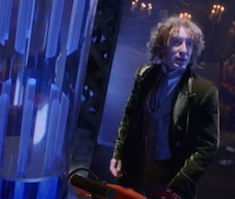 Before the Eighth Doctor, The New Adventures, stories that were advertised as being “too broad and deep for the small screen,” certainly developed the character of the Seventh Doctor, and many of those pieces have actually made it to the television screen. Many of the authors of the New Adventures—including Russell T. Davies, Paul Cornell, Mark Gatiss, Gareth Roberts, Matt Jones, Simon Winstone, and Gary Russell—have all worked on the revived television series. Some specific titles of the range, including Cornell’s Human Nature, have been adapted for television (in this case, changing from the Seventh Doctor to the Tenth Doctor for 2007’s Human Nature/Family of Blood episodes) or for audio.
Before the Eighth Doctor, The New Adventures, stories that were advertised as being “too broad and deep for the small screen,” certainly developed the character of the Seventh Doctor, and many of those pieces have actually made it to the television screen. Many of the authors of the New Adventures—including Russell T. Davies, Paul Cornell, Mark Gatiss, Gareth Roberts, Matt Jones, Simon Winstone, and Gary Russell—have all worked on the revived television series. Some specific titles of the range, including Cornell’s Human Nature, have been adapted for television (in this case, changing from the Seventh Doctor to the Tenth Doctor for 2007’s Human Nature/Family of Blood episodes) or for audio.
More than anything, however, the novels demonstrated two important facts about Doctor Who. First, that the mythology, ideas, and themes of the show could transcend the televisual medium. That for 16 years the “show” Doctor Who was kept alive with original novels reveals the ardor of the fan base and the flexibility of the show’s format. And second, they demonstrated that the concept and conceit of the show could handle more mature and darker themes. By the time the show was cancelled in 1989, it had already begun to explore, tentatively, ideas that the Doctor might have a dark and mysterious past—more so than had been revealed earlier. But the novels took this much further, and established a pathos to the character that has truly been taken up by the New Doctor Who series from 2005 onwards.
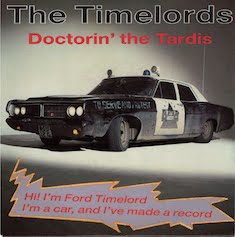 WU: Doctor Who is much more than a television show. There was a single that topped the UK Singles Chart in 1988 titled Doctorin’ the Tardis by The Timelords which incorporated samples of the Doctor Who theme music, as well as the two previously mentioned films, countless books, a number of comic book titles, a number of video games, and animated web shorts. What is the extent of the Doctor Who transmedia diaspora, how is this significant, and how do these transmedia aspects inform the current television program?
WU: Doctor Who is much more than a television show. There was a single that topped the UK Singles Chart in 1988 titled Doctorin’ the Tardis by The Timelords which incorporated samples of the Doctor Who theme music, as well as the two previously mentioned films, countless books, a number of comic book titles, a number of video games, and animated web shorts. What is the extent of the Doctor Who transmedia diaspora, how is this significant, and how do these transmedia aspects inform the current television program?
PB: What I find particularly interesting about the “transmedia diaspora” of Doctor Who is how absolutely incoherent it is. That isn’t to say that there isn’t some sort of connection drawing the works together—often, oblique references to some aspect of one ancillary product will show up in another, and of course they’re almost always organized via the inclusion of a particular Doctor—but there hasn’t been much of an attempt to bring it all together. This is unlike, say, the Star Wars Extended Universe, which until recently was considered relatively canonical (recently, that is, until Disney bought Star Wars and announced Episode VII, which presumably will invalidate some of the Extended Universe).
The “Doctor Who Extended Universe,” if you could call it that, consists of a number of parallel storylines and adventures. For many fans, only the things seen on television would be considered “canonical”—that is, the “official” story of the Doctor—but there are enough elements between all the ancillary products that confuse canonicity further. As mentioned above, there were really two ancillary products that started around the same time as the popularity of the television series skyrocketed in the 1960s: the line of episode novelizations and a series of comic strip adventures. At times, these ancillary products followed the series very closely, while at other times they were wildly divergent. For example, as discussed in David J. Howe’s authoritative The Target Book, the novelization of The Daleks took great liberties with the television source text with an alternate introduction, different character relationships, and a new focus on the companions. Some novelizations hewed closer to the original television story, but fleshed out the characters and situations more. Others used the particularities of the literature medium to great effect—the novelization of The Romans is told as an epistolary novel, for instance.
The comics are another story altogether. Starting almost as soon as the series did, a series of comic strip adventures for the Doctor ran, first in TV Comic and then later in TV Action. A regular strip also appeared in Doctor Who Magazine, which became Doctor Who Monthly, and continues to this day. In addition, other comic strip stories have appeared in other publications as well as in graphic novel format. Unlike the novelizations, the comics are original adventures, but like them they can vary greatly in how closely they attach themselves to the original show. For example, in the early days, the comic was vastly different. The Doctor travelled with two young children, John and Gillian, and meets all sorts of wacky and alien creatures. The medium of the comic gave writers greater leeway to create alternate, alien landscapes that the television show could never afford. The comics proved very popular and ran throughout the course of the show, even continuing after the show had ended. Today, the comics often run parallel to the current series: often introducing new companions and new situations, the stories also reference the show.
 Interestingly, Doctor Who ancillary material often references other ancillary material. For instance, a shapeshifting character named Frobisher was introduced in the Sixth Doctor comics, continued through the Seventh Doctor in the comics, and has appeared in both the Past Doctor Adventures books as well as the Big Finish audio plays. Frobisher, most often taking the appearance of a talking penguin detective, has recently been in the 50th anniversary comic series Prisoners of Time.
Interestingly, Doctor Who ancillary material often references other ancillary material. For instance, a shapeshifting character named Frobisher was introduced in the Sixth Doctor comics, continued through the Seventh Doctor in the comics, and has appeared in both the Past Doctor Adventures books as well as the Big Finish audio plays. Frobisher, most often taking the appearance of a talking penguin detective, has recently been in the 50th anniversary comic series Prisoners of Time.
Another major influence within the ancillary media has been the Big Finish audio plays. Founded in 1996 by a group of fans, the company got a license from the BBC to produce original Doctor Who drama starring the original actors to play the roles, as well as the original companions. At first Big Finish released only Fifth, Sixth, and Seventh Doctor audio adventures, but soon they branched out and started to create Eighth Doctor audios, companion chronicles (which feature one of the former companions telling original stories), and enemy-specific stories like Dalek Empire, Cybermen, and I, Davros. Recently, the company has started using the Fourth Doctor (Tom Baker) in his own series of adventures, and for the 50th anniversary they released a massive story called Light at the End featuring the first eight Doctors (they used archive audio and different actors to reproduce the First, Second, and Third). In 2006, the BBC even broadcast original Eighth Doctor audios on the radio, making Big Finish’s version of the Eighth Doctor as close to canon as possible, and as I mentioned earlier, the Night of the Doctor mini-episode even name-dropped the Eighth Doctor companions from the audios.
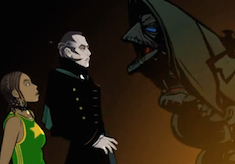 There are a few BBC Doctor Who productions that seemed like they should be part of the main Doctor Who ongoing text but have later been contradicted. For example, to celebrate the 40th anniversary of the series in 2003, the BBC created a webseries called Scream of the Shalka with a Ninth Doctor played by Richard E. Grant. The animated story was intended to be an official continuation of the program, but Russell T. Davies’s revival of the show in 2005 and his casting of Christopher Eccleston as the televised Ninth Doctor contradicted that. Other more obscure ancillary products surrounding Doctor Who include some stage shows from the 1970s and 1980s, like Doctor Who: The Ultimate Adventure, first starring Jon Pertwee as the Third Doctor and then later starting Colin Baker as the Sixth Doctor, and Seven Keys to Doomsday with a newly regenerated new Doctor and new companions Jenny and Jimmy (these have both been adapted for audio by Big Finish).
There are a few BBC Doctor Who productions that seemed like they should be part of the main Doctor Who ongoing text but have later been contradicted. For example, to celebrate the 40th anniversary of the series in 2003, the BBC created a webseries called Scream of the Shalka with a Ninth Doctor played by Richard E. Grant. The animated story was intended to be an official continuation of the program, but Russell T. Davies’s revival of the show in 2005 and his casting of Christopher Eccleston as the televised Ninth Doctor contradicted that. Other more obscure ancillary products surrounding Doctor Who include some stage shows from the 1970s and 1980s, like Doctor Who: The Ultimate Adventure, first starring Jon Pertwee as the Third Doctor and then later starting Colin Baker as the Sixth Doctor, and Seven Keys to Doomsday with a newly regenerated new Doctor and new companions Jenny and Jimmy (these have both been adapted for audio by Big Finish).
Ultimately, more than anything what the existence of these multiple ancillary products, contradictory canons, and intersecting narratives proves is that the varied universe(s) of Doctor Who run deeper than just the television show. Although it is not necessary to listen to any of the audios, read any of the books or comics, see the stage shows, play the video games, or develop any sort of an ancillary understanding of Doctor Who to enjoy the television series, doing so creates a deeper, more involved, and frankly more incoherent world. And while purists may value coherence over multiplicity, the many different media of Doctor Who actually hide the fact that the show itself is wildly incoherent at times. The Doctor didn’t have two hearts when the show begins in 1963. His stated age changes throughout. The TV Movie establishes that he is half human (they ignored that one right away!). Small details that crept into the show from the start have been contradicted throughout the new series…and that’s ok. Seeing the multiplicity of the products, the different opportunities that they bring to the narrative, reveals a flexibility
